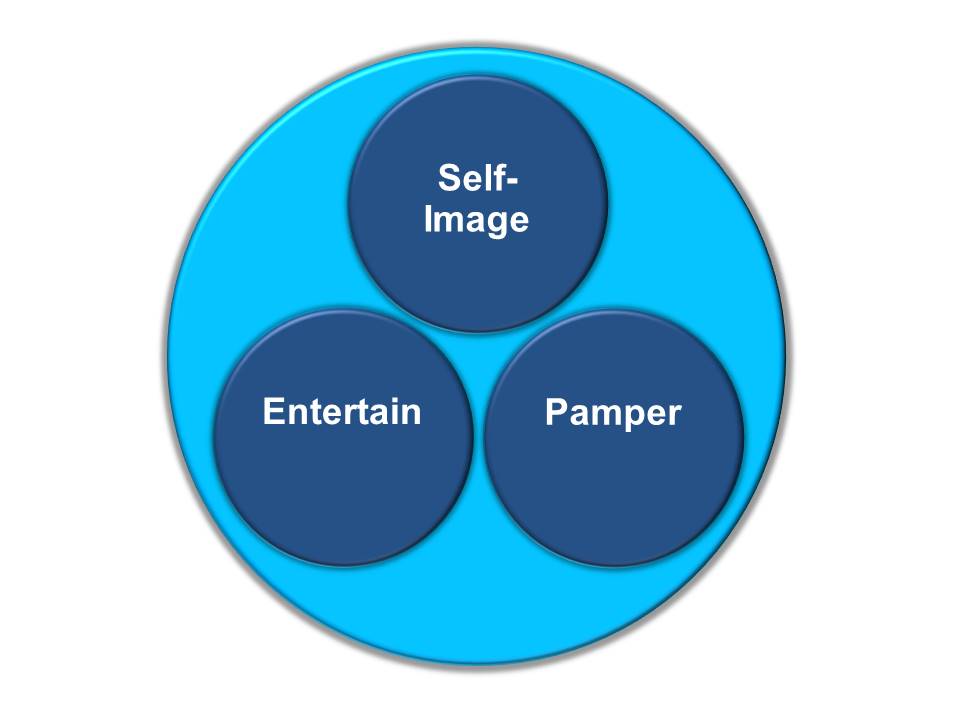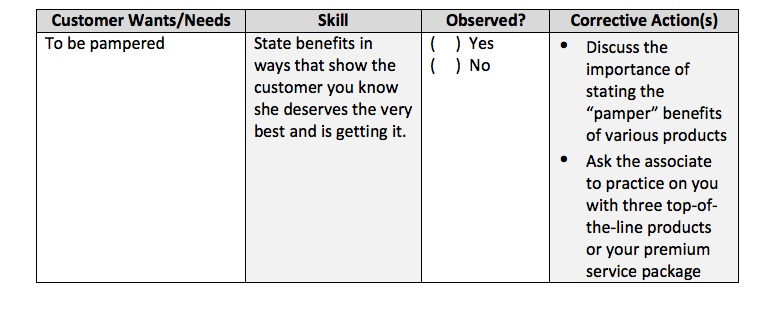
 Let’s assume you’ve hired and trained your staff to meet the wants and needs of today’s consumers—enhanced self-image, entertainment, and pampering—as described in my book, “Meconomics 101: 16 Ways to Improve Your Marketing, Selling and Business Management for Today’s Consumers,” and in my previous www.TrainingMag.com article, “Why and How to Make Your Staffing and Training Strategies Fit Today’s Customers.”
Let’s assume you’ve hired and trained your staff to meet the wants and needs of today’s consumers—enhanced self-image, entertainment, and pampering—as described in my book, “Meconomics 101: 16 Ways to Improve Your Marketing, Selling and Business Management for Today’s Consumers,” and in my previous www.TrainingMag.com article, “Why and How to Make Your Staffing and Training Strategies Fit Today’s Customers.”
That’s two-thirds of the job when it comes to delivering performance. However, it frequently happens that the impact of training fades unless the training is reinforced through appropriate coaching. So it’s time to address coaching of the staff skills you’ve hired or developed through your training program.
Coaching
Merriam-Webster defines a coach as “one who instructs or trains” (http://www.merriam-webster.com/dictionary/coach). This definition does not include “one who berates, belittles, or screams at people.”
For example, you’re probably familiar with the line from the movie, A League of Their Own, “There’s no crying in baseball!” (A League of Their Own. (1992). Retrieved fromIn the movie, a player named Evelyn was crying after receiving some coaching from manager Jimmy (played by Tom Hanks). We all remember Evelyn crying and that line from the movie. But do you remember why Evelyn was crying? Immediately before that line, Jimmy “coached” Evelyn this way:
Jimmy: “Which team do you play for?”
Evelyn: “Well, I’m a Peach.”
Jimmy: “Well I was just wondering, ’cause I couldn’t figure out why you would throw home when we’ve got a two-run lead.” [Then screaming at Evelyn] “You let the tying run get on second, and we lost the lead because of you. Now you start using your head. That’s that lump that’s three feet above your @!#.”
It looks like Jimmy never read the dictionary, because he sure wasn’t “instructing, directing, or prompting” better performance. He was relieving his frustration, but not accomplishing much else. Jimmy isn’t the only manager who coaches this way. According to research, two out of three salespeople rate their managers low in coaching skills (Sales Challenger. (2010). Retrieved from http://saleschallenger.exbdblogs.com/2010/03/16/think-you%e2%80%99re-
good-at-coaching-your-reps-don%e2%80%99t-think-so/)
In practice, coaching should include watching your staff as they do their jobs and making sure they are doing the right things the right way. You then should reinforce or correct their skills as appropriate. Specifically, you should:
- Participate in training programs (so you know what your staff is being trained to do).
- Audit your staff as they work with customers.
- Give specific feedback (confirming or corrective feedback).
Coaching to Customer Wants and Needs

How, then, do the three customer wants—enhanced self-image, entertainment, and pampering—affect the way you should coach your staff and model the way they should treat customers?
Self-Image: Audit your staff to see if they are working to identify and then enhance the customer’s self-image, appreciating the customer’s uniqueness, and meeting her needs with unique solutions and the best you can offer. To model self-image with your staff, think about:
- How does your staff like to be treated?
- What kind of coaching does each member of your staff prefer or respond best to?
- What skills and techniques were taught in your training?
- What will you do if you don’t see those skills in action?
Entertain: See if your staff is making the experience fun (or simple) for customers. Also, evaluate how you interact with your staff:
- What attitude do you convey—are you glad for your current staff or do you think of them as a lot of work and drudgery?
- Provide enjoyable facilities and working conditions (desks, food, incentives, etc.) for your staff.
- Provide entertainment bonuses (e.g., concerts, music downloads, etc.). Your staff likes entertainment, too!
Pamper: Observe your staff to see if they are pampering your customers and then model pampering with your staff.
- Review the pamper training with your staff, the reasons why it’s important, and ways to pamper customers.
- Compare your customer shopping experience with pampering environments (e.g., spas, cosmetics counters, fine restaurants) and improve your customer shopping experience accordingly.
- Pamper your staff in your relationship with them, to demonstrate the techniques and the impact of the techniques.
A Coaching Tool
In all cases, develop checklists of the skills you expect your staff to use with customers (based on the training you provided and participated in) and your expected corrective actions if you don’t see the skills in action. (Warning: No berating, belittling, or screaming allowed!) The following table provides a brief example and format for such a checklist.

You can create these checklists yourself after participating in the training. Better yet, ask trainers to provide such checklists as a condition for delivering training programs to your staff.
Brian Gracon has 20 years of experience as a training and marketing consultant and instructional designer (www.meconomics101.com and www.traininggetsresults.com). He is the author of “Meconomics 101: 16 Ways to Improve Your Marketing, Selling and Business Management for Today’s Consumers” (Black Rose Writing, 2016).



